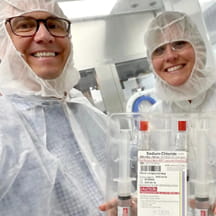The effort to vaccinate an entire country against COVID-19 thrust pharmacists into the forefront of the pandemic. Children’s hospitals and pharmacists currently play a key role in coordinating vaccine distribution for health care workers, first responders, teachers and the community.
Eric Balmir, M.S., Pharm.D., vice president and chief pharmacy officer at Children’s National Hospital in Washington, D.C., has been a pharmacist for more than 20 years. He says the role of pharmacy leaders has evolved requiring their expertise to grow with the changes in health care and technology. Here, he discusses artificial intelligence, automation and other adaptations happening in pharmacies.
How have pharmacy leaders' roles changed?
In the past, pharmacy directors were focused on finance. As technology has evolved, so has the workload. Pharmacists used to be in the back pouring and mixing. Now you need a Ph.D. in electronics because we’re using artificial intelligence (AI), automation and programs to manage the work.
We ensure that we have superior drugs that are effective, don’t cause extra side effects, and don’t make the rest of the staff work harder. The position has morphed into three paradigms: safety, efficacy and finance.
What insights do pharmacists offer an organization?
Pharmacy leaders bring accountability and knowledge of the organization’s flow. When you want to talk about how patients flow through a system, no one does it better than a pharmacist. At Children’s National, we dispense 6,000 drug doses a day.
Each dose is different, so we need an accountable party and good process management. We practice financial management, performance improvement and patient satisfaction.
How is AI making a difference?
Using AI to catch the next mistake is amazing. At a teaching organization, you can see when there’s a pattern of people making the same mistakes. We monitor the behavior patterns for processing orders to see where things go wrong. Monitoring flags potential areas for concern, allowing us to incorporate mitigating strategies for a safer patient experience.
How did the hospital build its COVID-19 vaccination plan?
We looked at the ZIP codes that were hardest hit with COVID-19, and we matched our plan to that. Any employees who were patient-facing and lived in those ZIP codes were at the front of the line. Trusted messengers talked with staff to reduce resistance—effectively, we took their hands and walked with them.


